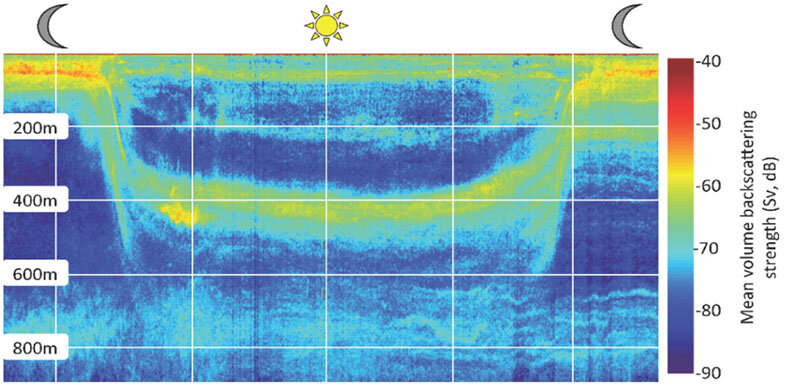
By Tracey Sutton, Professor and Director/Principal Investigator - DEEPEND Consortium and Guy Harvey Oceanographic Center, Nova Southeastern University
The pelagic habitat contains a diverse and highly specialized fauna, with adaptations becoming more and more “bizarre” as one goes deeper into the water column. Most deepwater organisms produce biological light (bioluminescence) similar to that of a firefly. Some animals use light to hunt, some use light to startle predators, and some use light to find mates. Predatory fishes often have enormous fangs, while their prey use light organs on their bellies to match downwelling sunlight when viewed from below.
Despite the intrinsic fascination inspired by these amazing creatures, we still lack even a basic faunal inventory of the animals living deep in the pelagic habitat. These systems are difficult to sample, and even harder to observe in real time. Most sampling and sensing systems create disturbance in water that “pre-warns” organisms, resulting in avoidance. Thus, the unique combination of stealthy observation (acoustic sensing, untethered drifters, electric vehicles) applied in this project will give us a unique view of the animals inhabiting Earth’s largest living space, the deep-pelagic realm, including their undisturbed form and behavior.
The Gulf of Mexico, which has been extensively surveyed since Deepwater Horizon by the Deep Pelagic Nekton Dynamics of the Gulf of Mexico (DEEPEND) Consortium , is a perfect site for these integrated techniques — it boasts incredible water column diversity, it contains rich deep-benthic communities (e.g., cold-water corals) supported by pelagic resources, and an extensive dataset exists regarding species composition, abundance, and distribution with which to calibrate in situ sensing and observation techniques.

Echogram illustrating the ascending and descending phases of the diel migrations (warmer colors) through the water column. The downward and upward migration activity occurs during dawn and dusk periods. The color scale represents the strength of the sound that is reflected by the organisms in the water column from the ship-based sonar. Cooler colors show less sound reflected and warmer colors show more sound reflected, indicating the presence and density of animals. Image courtesy of Kevin Boswell, Florida International University and the DEEPEND (Deep Pelagic Nekton Dynamics of the Gulf of Mexico) Consortium. Download largest version (jpg, 112 KB).
A key aspect of pelagic habitats is the daily movement of organisms from deep daytime depths to shallower nighttime depths. The prevailing theory behind why vertical migration occurs is feeding and predator avoidance. Most prey for larger predators are found near surface waters, where there is ample sunlight for photosynthesis. Animals in the scattering layer reside in deeper waters during the day, and travel up to surface areas to feed at night to avoid detection by visual predators.
This phenomenon, called “diel vertical migration,” represents the largest organized mass movement of animals on the planet when considering overall biomass, number of individuals, and species moving together. These highly coordinated migrations play a pivotal role in structuring ecological and physicochemical processes as well as the biological carbon pump of the vast oceanic ecosystems.
Animals, primarily crustaceans and fish, comprising these vertical migrations form layers both day and night. The location of these “deep-scattering layers,” so called because they are detectable using soundwaves, are areas of concentrated life, and form much of the “habitat” in the ocean’s midwaters.
Published July 28, 2021